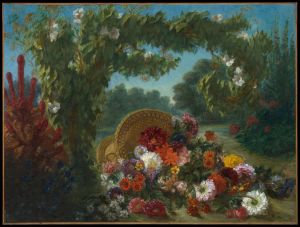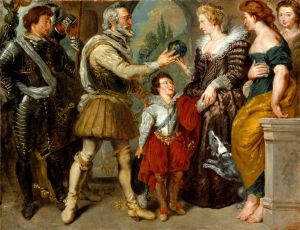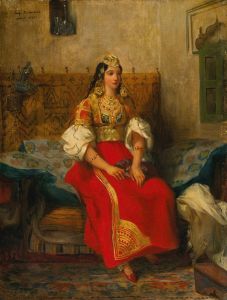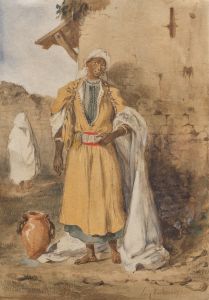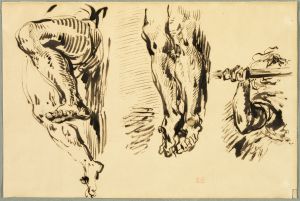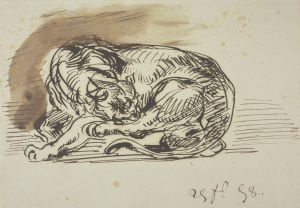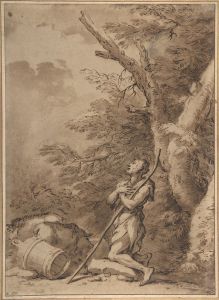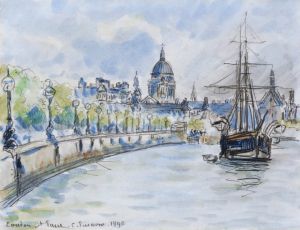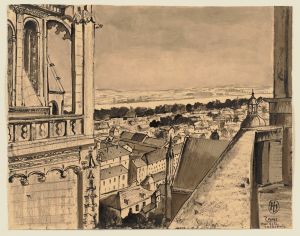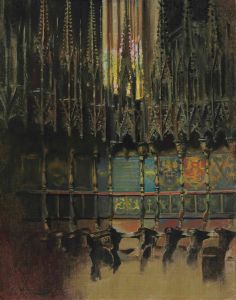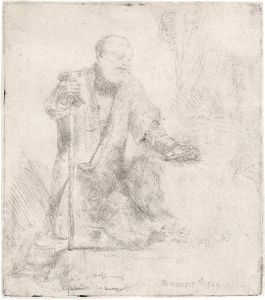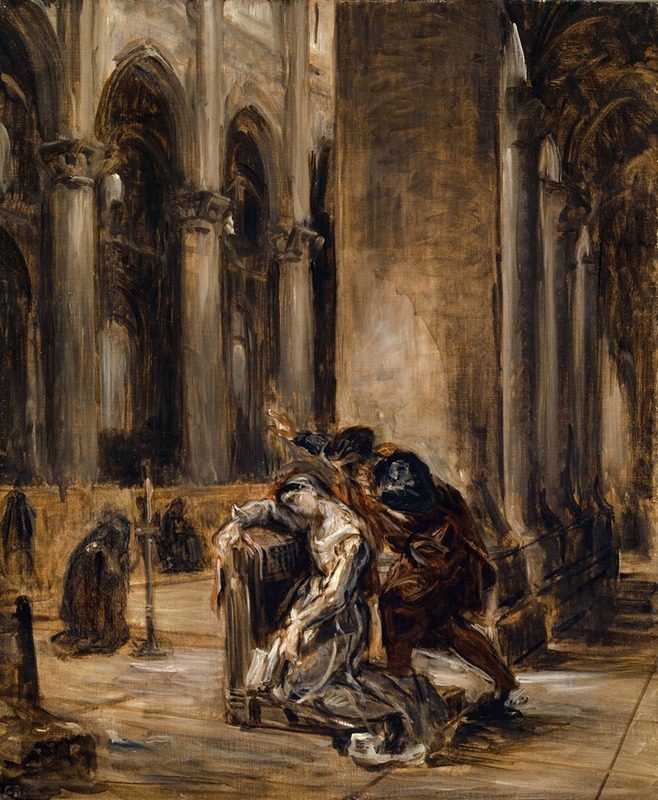
Gretchen in the Church
A hand-painted replica of Eugène Delacroix’s masterpiece Gretchen in the Church, meticulously crafted by professional artists to capture the true essence of the original. Each piece is created with museum-quality canvas and rare mineral pigments, carefully painted by experienced artists with delicate brushstrokes and rich, layered colors to perfectly recreate the texture of the original artwork. Unlike machine-printed reproductions, this hand-painted version brings the painting to life, infused with the artist’s emotions and skill in every stroke. Whether for personal collection or home decoration, it instantly elevates the artistic atmosphere of any space.
Eugène Delacroix's painting "Gretchen in the Church" is an evocative work that captures a moment from Johann Wolfgang von Goethe's famous play "Faust." Delacroix, a leading figure of the Romantic movement in France, was known for his expressive brushwork and vibrant use of color, qualities that are evident in this painting.
The painting depicts the character Gretchen, also known as Margarete, who is a central figure in Goethe's "Faust." In the play, Gretchen is a young woman who becomes romantically involved with Faust, a scholar who makes a pact with the devil. Her story is one of innocence, love, and eventual tragedy, as she is led into a series of unfortunate events due to her relationship with Faust.
In "Gretchen in the Church," Delacroix captures a poignant moment where Gretchen is in a church, seeking solace and perhaps redemption. The setting of the church is significant, as it symbolizes a place of refuge and moral contemplation. Delacroix's depiction of Gretchen reflects her inner turmoil and the conflict between her faith and the consequences of her actions.
Delacroix's interest in literary subjects was well-known, and he often drew inspiration from works of literature for his paintings. His fascination with Goethe's "Faust" is evident in several of his works, and "Gretchen in the Church" is a testament to his ability to translate complex literary themes into visual art. The painting is characterized by Delacroix's dynamic composition and his use of light and shadow to convey emotion and drama.
The Romantic movement, of which Delacroix was a key proponent, emphasized emotion, individualism, and the sublime. "Gretchen in the Church" embodies these ideals through its focus on the emotional state of the protagonist and the dramatic tension of the scene. Delacroix's use of color and light enhances the emotional impact of the painting, drawing the viewer into Gretchen's world and her internal struggle.
Delacroix's work was influential in the development of modern art, and his approach to color and composition had a lasting impact on later artists, including the Impressionists. "Gretchen in the Church" is an example of how Delacroix's innovative techniques and his engagement with literary themes contributed to his reputation as one of the most important painters of the 19th century.
The painting is housed in the Louvre Museum in Paris, where it continues to be admired for its artistic and historical significance. As with many of Delacroix's works, "Gretchen in the Church" invites viewers to explore the intersection of art and literature, and to consider the ways in which visual art can capture the essence of complex human emotions and narratives.






